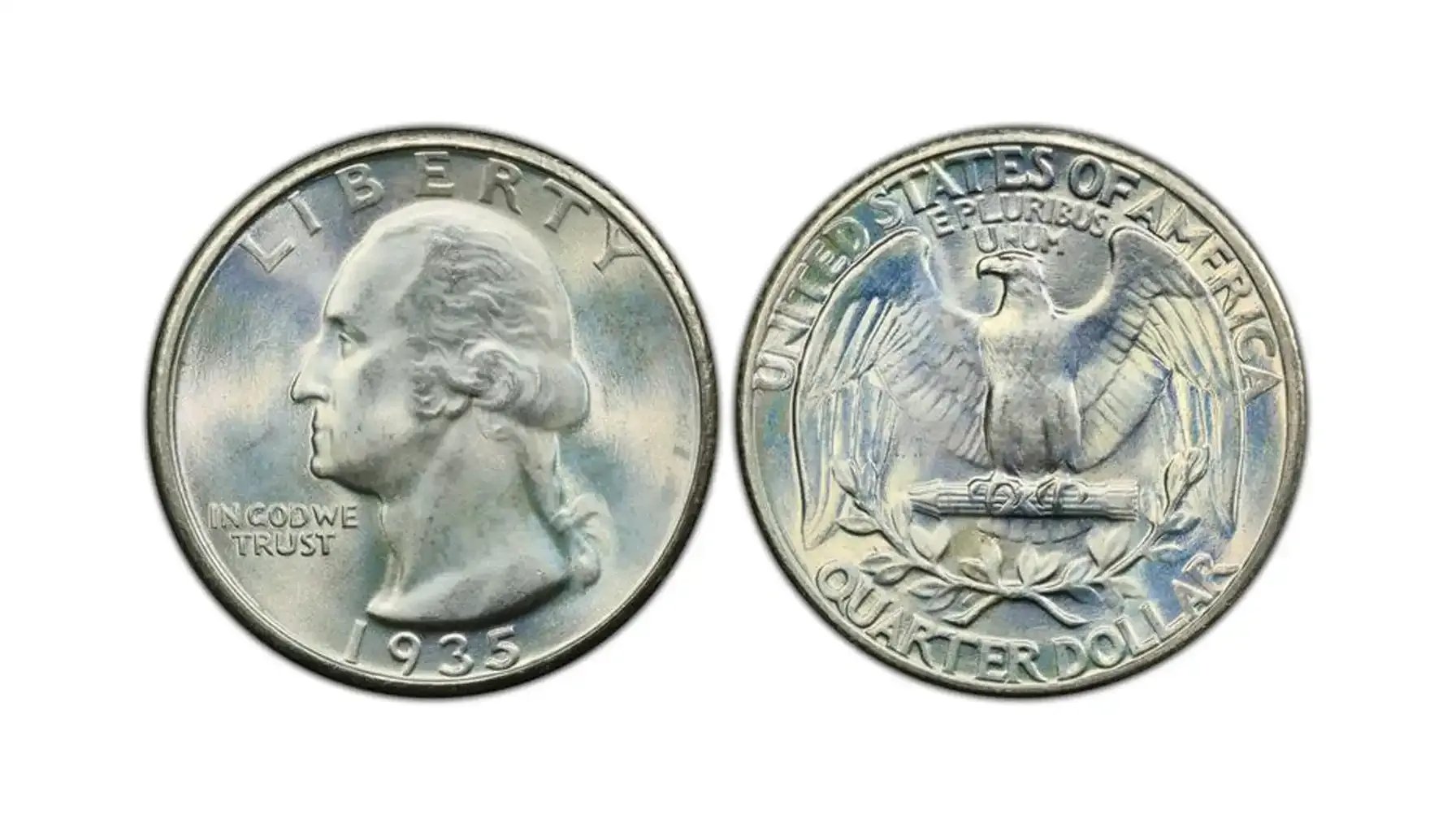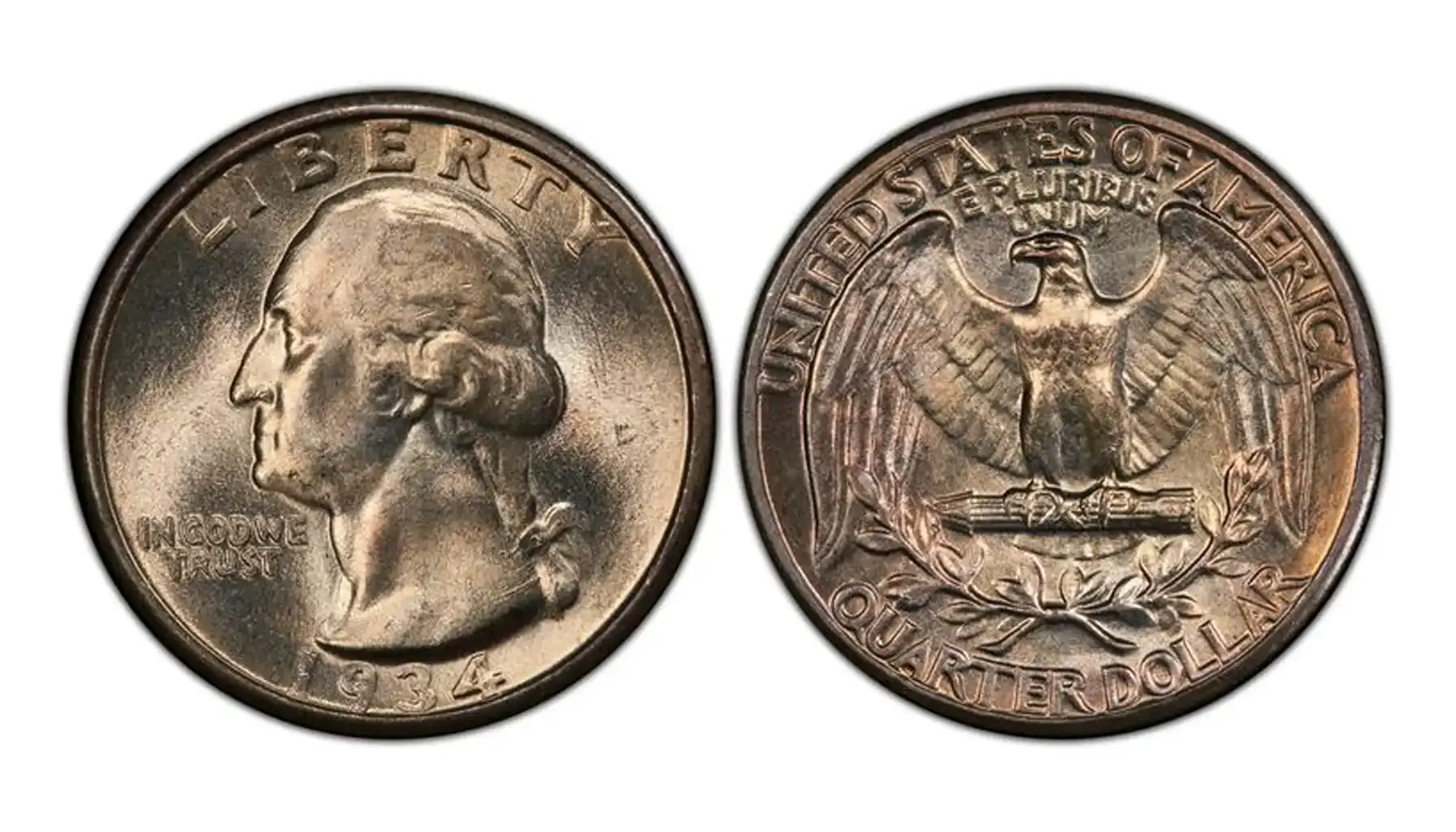Contents:
Where luster fades, the value only grows...
Coins minted from precious metals are undeniably the value-packed pieces whose intrinsic value, both from a commercial and historical perspective, intensifies as years go by. Silver quarters refer to one of the most popular groups of numismatic creations that have proudly earned their reputation as reliable tools for coin investment, but this also depends on the year they were produced.
Going back in time, this exploration begins with the earliest silver quarters minted in 1796 and traces their evolution across centuries. Which designs are the most prominent? What quarters are silver, and how to check coin value on the spot? Track coin transformation and define which coins to look for?
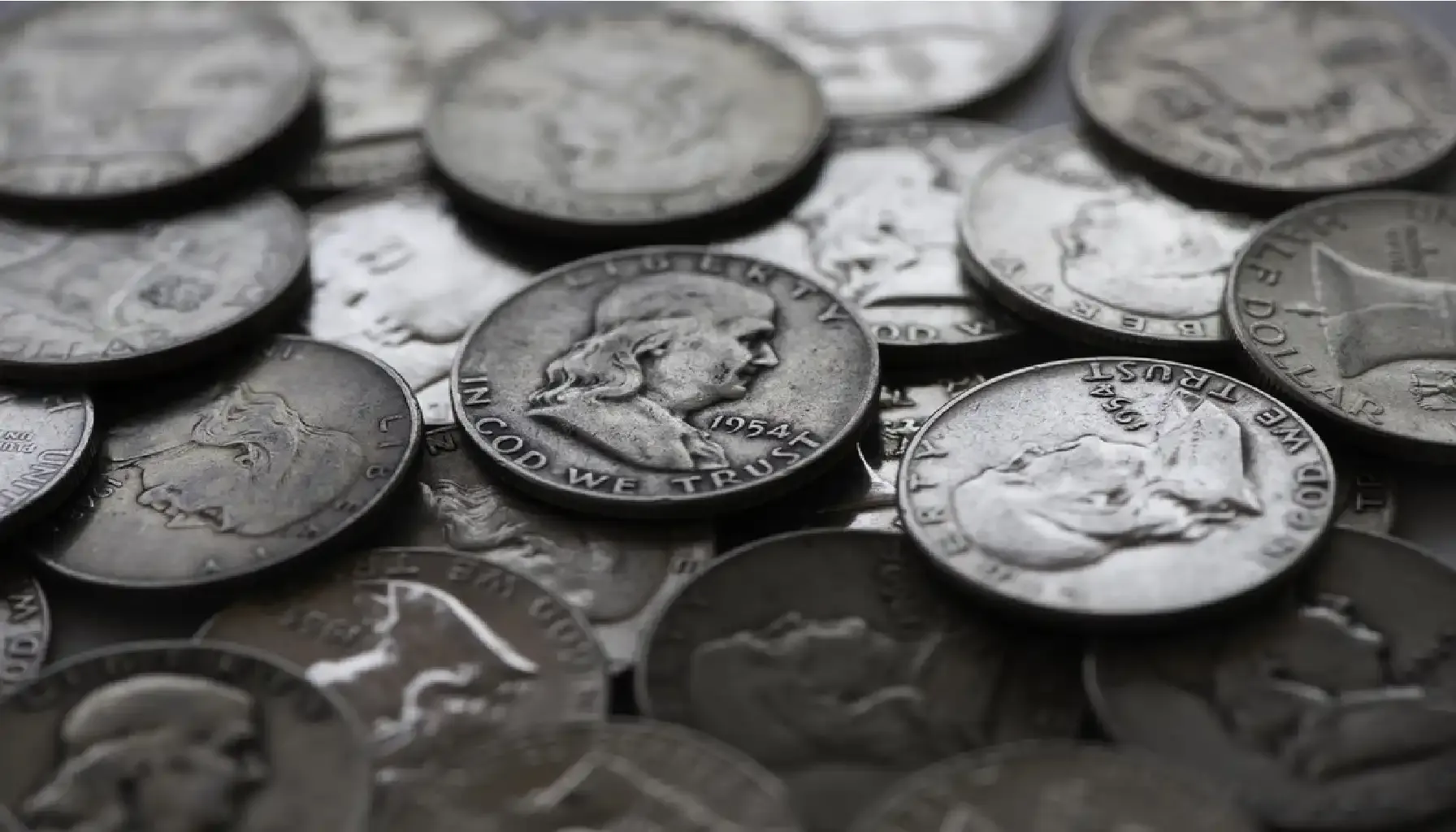
What Is a Silver Quarter?
A silver quarter is a 25-cent coin that contains a significant amount of silver in its composition, consistently minted from 1796 until 1964 (with only occasional issues released after 1964). The silver age spanned well over the centuries. Before quarters gained the copper-nickel-clad composition we know today, these were mainly struck from genuine silver only.
How practical was this decision? Well, in fact, it was a deliberate choice to solidify one of the earliest national currencies and make it widely circulated yet cherished. By the way, the idea of “art through coins” has been present in the monetary sector from its dawn: e.g., President Theodore Roosevelt commenced the beautification of US coinage in the early 20th century. Dissatisfied with the bland designs, Roosevelt initiated a campaign to elevate American coins to the level of classical art.
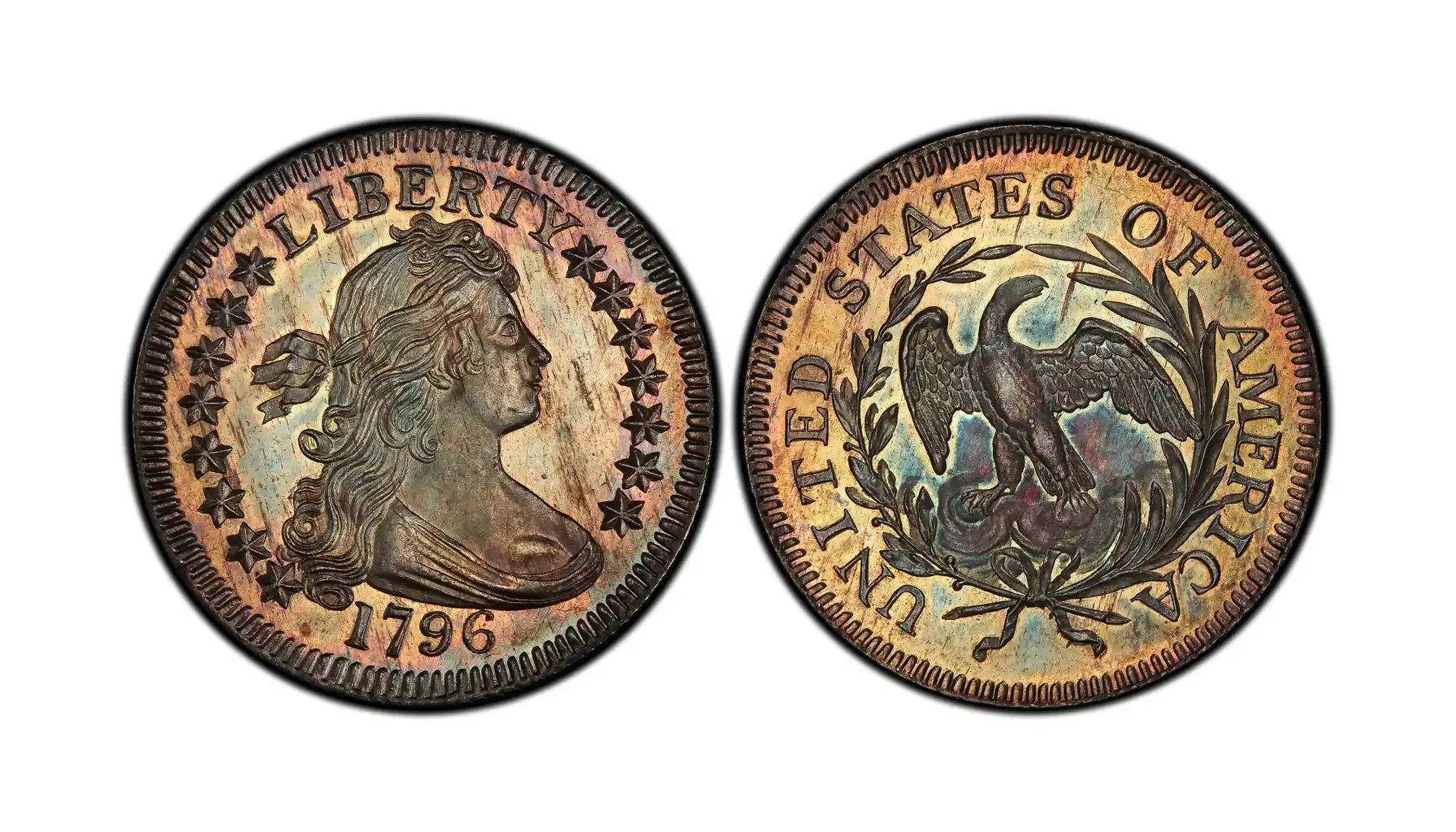
The first silver quarter appeared in 1796, featuring the elegant Draped Bust design. Early issues, unlike their later iterations, were minted in limited quantities, which is why they have always represented the most profitable investment solutions for those who can afford to keep a true relic in their collections. As time passed, there were introduced new designs, often with gaps in production between transitions, with the silver content getting gradually standardized at 90% silver and 10% copper.
These days, silver 25-cent coins are no longer found in everyday change. These are numismatic artifacts that are highly valued by collectors who appreciate history carried through metal. But why and, most importantly, when did they stop making silver quarters? When did the age of silver come to an end?
Silver Quarter Years: The Most Prominent Series
Though it may appear uniform today, the US quarter has had to sustain numerous transformations over the decades or, rather, centuries. Prior to 1965, most 25C coins were struck from 90% silver, yet a few special issues containing Ag are still regularly released (not for general circulation, for sure). Silver has never been set aside.
So, what year quarters are silver? And how much Ag do they contain? Let us review the most notable series and the precious metal content they quietly carry within.
Design | Mintage Period | Composition (Ag Content) | Weight | Design Features |
1796–1807 | ~89.24% silver, 10.76% copper (~0.1947 oz) | 6.74 g | Classic Liberty bust with flowing hair (obverse) A small eagle (1796) or heraldic eagle (1804–1807) (reverse) | |
Capped Bust | 1815–1838 | 89.24% silver until 1836, then 90% silver (~0.1964 oz) | 6.74 g | Liberty wearing a cap (obverse) An eagle with shield and arrows (reverse) |
1838–1891 | 90% silver, 10% copper (~0.1808 oz) | 6.25 g | Liberty seated with shield (obverse) A wreath or an eagle, varying by issue year (reverse) | |
1892–1916 | 90% silver, 10% copper (0.1808 oz) | 6.25 g | Liberty in a Phrygian cap with a laurel wreath (obverse) An eagle with national symbols (reverse) | |
Standing Liberty | 1916–1930 | 90% silver, 10% copper (0.1808 oz) | 6.25 g | Liberty standing with shield and olive branch (obverse) An eagle in flight (reverse) |
Washington (Silver) | 1932–1964 | 90% silver, 10% copper (0.1808 oz) | 6.25 g | George Washington portrait (obverse) A stylized eagle with wings spread wide (reverse) |
The 1965 Shift: How Silver Left the US Coinage
By the early 1960s, the escalating market value of silver created a serious challenge for US coin production. As the worth of metal content was becoming nearly equal to or even surpassing the face value, people all across the country began hoarding silver coins, anticipating their potential rise in melt value.
To address this economic imbalance, Congress enacted the Coinage Act of 1965, which prescribed the removal of silver from quarters and dimes from then on. 1964 was the last year of silver quarters in circulation. On its part, the US Mint adopted a more affordable copper-nickel clad composition for circulating coins. Although all the 25-cent pieces struck from 1964 no longer contain silver, the Mint has continued to issue special silver editions for collectors. These will be mentioned below.
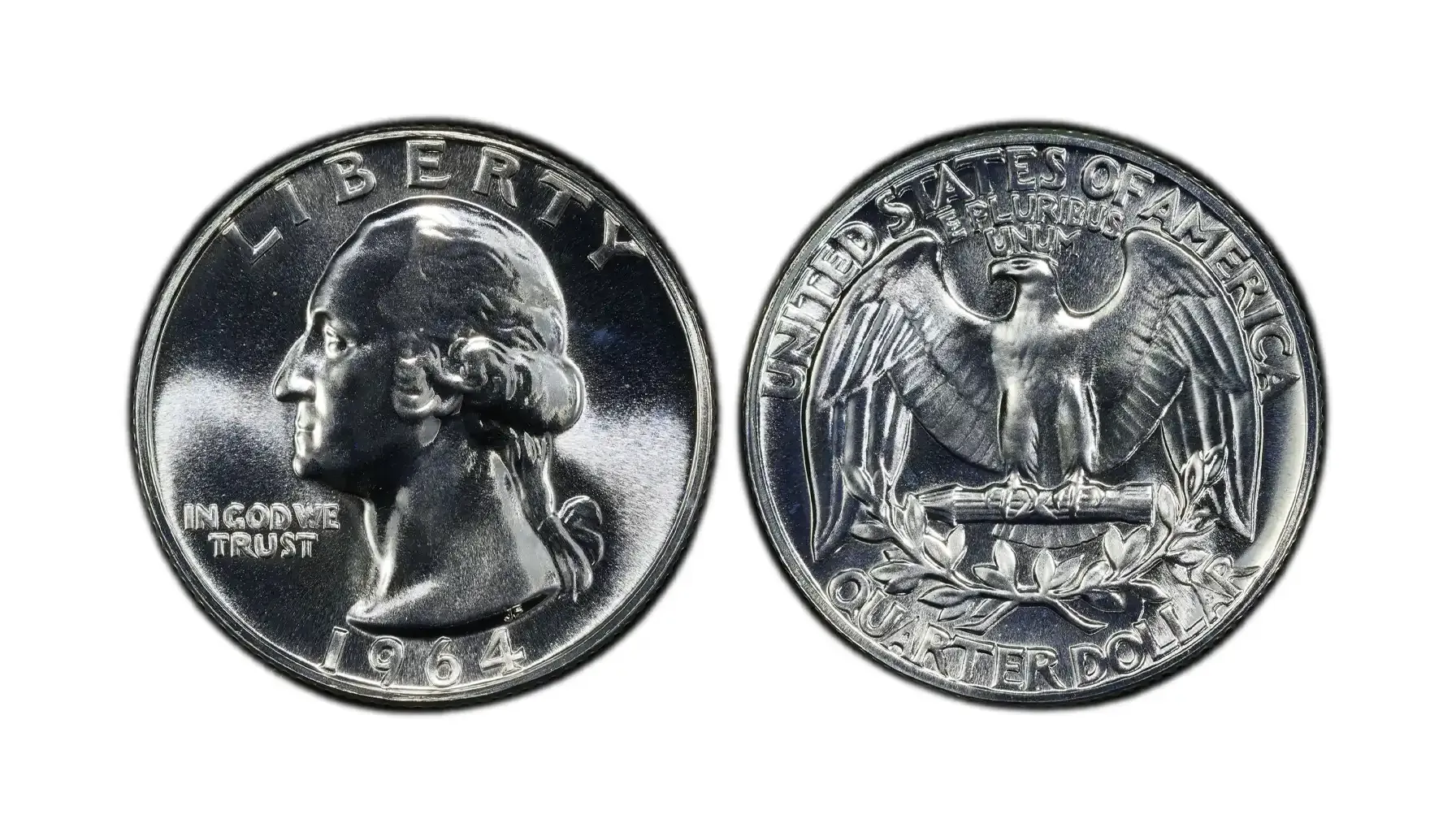
Silver Quarter Melt Value
Those who already own or are just planning to obtain such a coin may wonder what the melt value is. As such, the melt value of a silver quarter refers to the current worth of its silver content alone (without collectors' interest taken into consideration). Quarters minted in 1964 or earlier contain 90% silver, which equals about 0.1808 troy ounces of pure silver per coin.
So as to calculate the melt value of silver quarters, one should multiply the current spot price of silver by 0.1808. For instance, if silver is priced at $33 per troy ounce, the melt value would be approximately $5.96.

How Much Is a Silver Quarter Worth?
How much are silver quarters worth? The value of any coin varies significantly depending on the key factors. These include the specific issue and mint year, the total mintage (how many were produced), condition or grade, and any unique historical or design attributes that boost the collectibility level to new heights. First of all, we would like to present a table with general value ranges by series and condition.
Years | Series | G4–VF | EF–MS60 | MS60-MS65 / MS65+ |
1796–1807 | Draped Bust | $300-$1,200 | $1,500-$4,000 | $4,000-$8,000 / $10,000+ |
1815–1838 | Capped Bust | $100-$300 | $300-$600 | $600-$1,000 / $1,200-$2,500 |
1838–1891 | Seated Liberty | $25-$100 | $100-$300 | $300-$700 / $800-$3,000 |
1892–1916 | Barber | $10-$50 | $50-$120 | $120-$300 / $300-$1,000 |
1916–1930 | Standing Liberty | $30-$100 | $100-$250 | $250-$600 / $600-$2,000 |
1932–1964 | Washington (Silver) | $7-$15 | $15-$35 | $35-$100 / $100-$500 |
1976 | Bicentennial (Silver Proof) | – | – | $8-$20 / $20-$60 |
2010–2021 | America the Beautiful (Silver Proof only) | – | – | $15-$30 / $30-$80 |
2022–2025 | American Women (Silver Proof only) | – | – | $10-$20 / $20-$50 |
Even though the entire series may not be considered uniformly outstanding or rare, certain coins within each issue may turn into something special anyway. Exceptional examples are always the most appealing from the very beginning, yet some attributes are gained (or understood) over time only.
As of now, one may easily analyze the market data with the use of innovative tools like Coin ID Scanner to quickly identify coins, assess their condition, verify authenticity, and estimate current market value based on real-time pricing and trends provided by the most reputable auction platforms.
The Most Valuable Silver Quarters For Sale
1796 25C (Regular Strike)
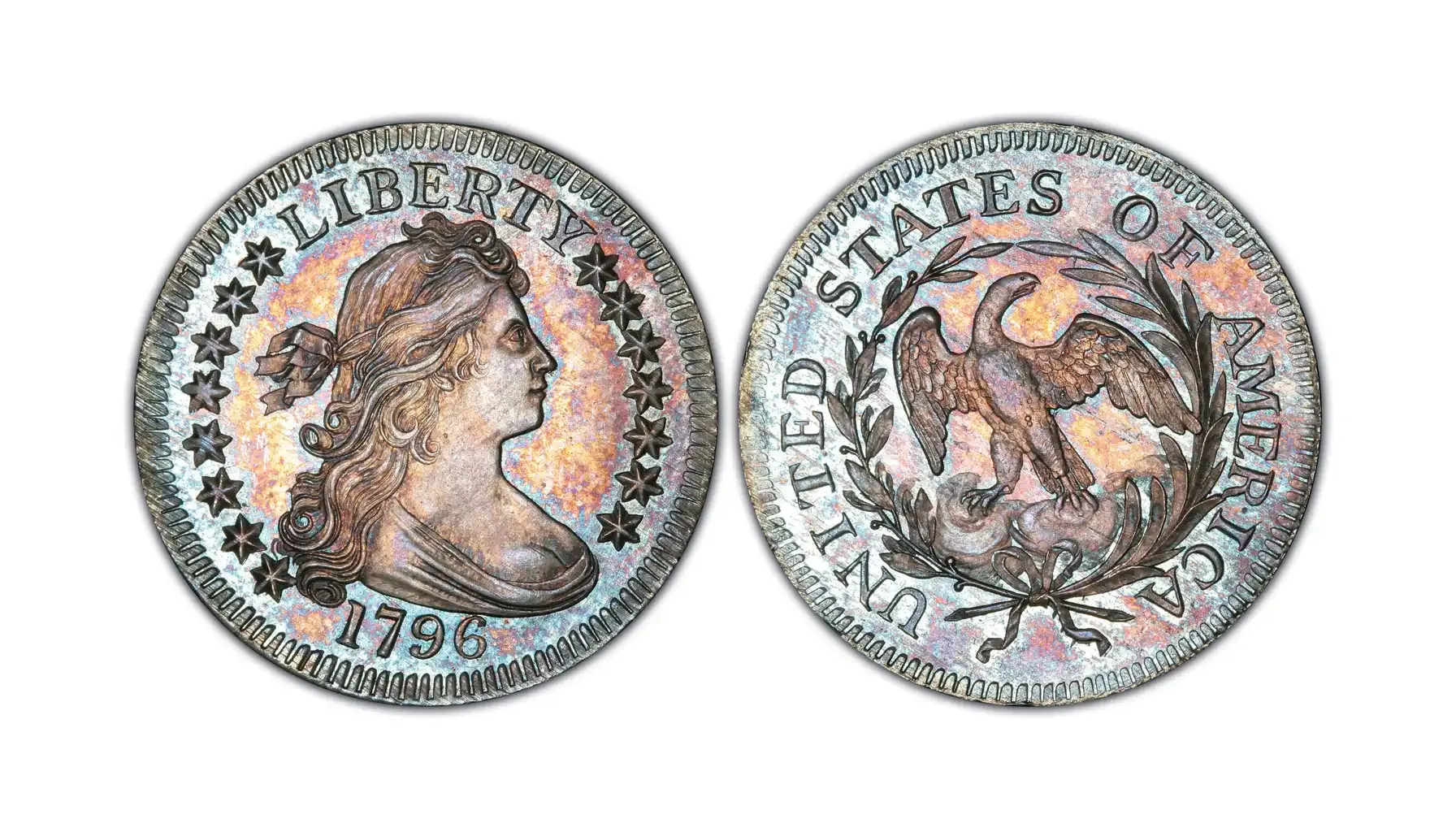
Produced by: Philadelphia Mint
Mintage: 6,146
Auction Record: $1,740,000 for MS66
This was the first quarter ever issued by the US Mint and remained the only one struck in the 18th century. It was a standalone issue, with no 25-cent coins struck again until 1804. Surviving examples are exceedingly rare, and this is why even low-grade specimens are treasures. Besides, experts estimate that only a few dozen have appeared at auction over a span of several years.
1807 25C (Regular Strike)
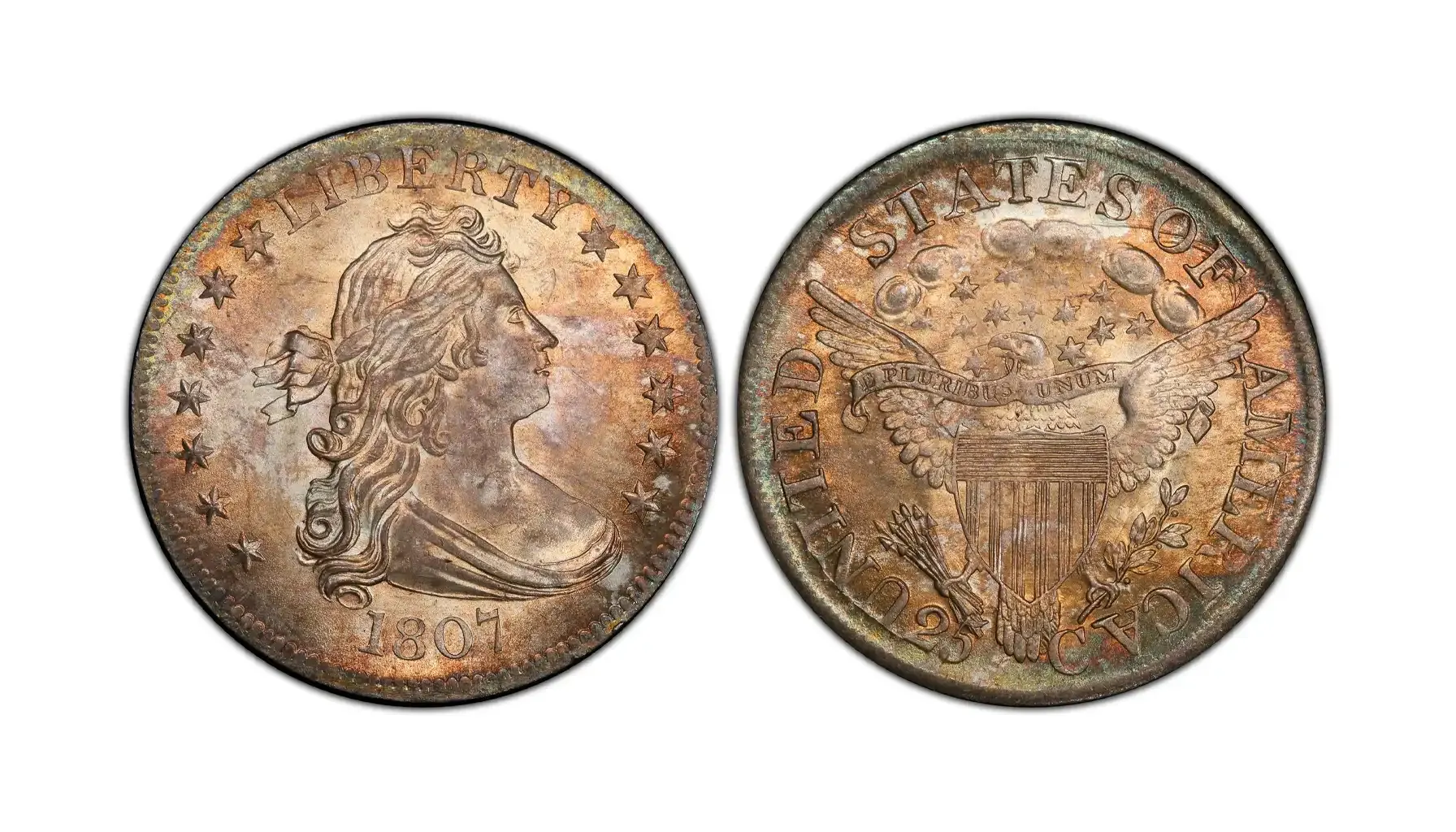
Produced by: Philadelphia Mint
Mintage: 220,643
Auction Record: $630,000 for MS67
Although this instance might boast the highest mintage of any Draped Bust quarter, the 1807 issue is notably scarce in top grades. The vast majority display weak peripheral detail and signs of die clashing, but high-grade survivors are still extremely (potentially with no fully struck Mint State examples existing).
1827/3 25C Original, CAM (Proof)
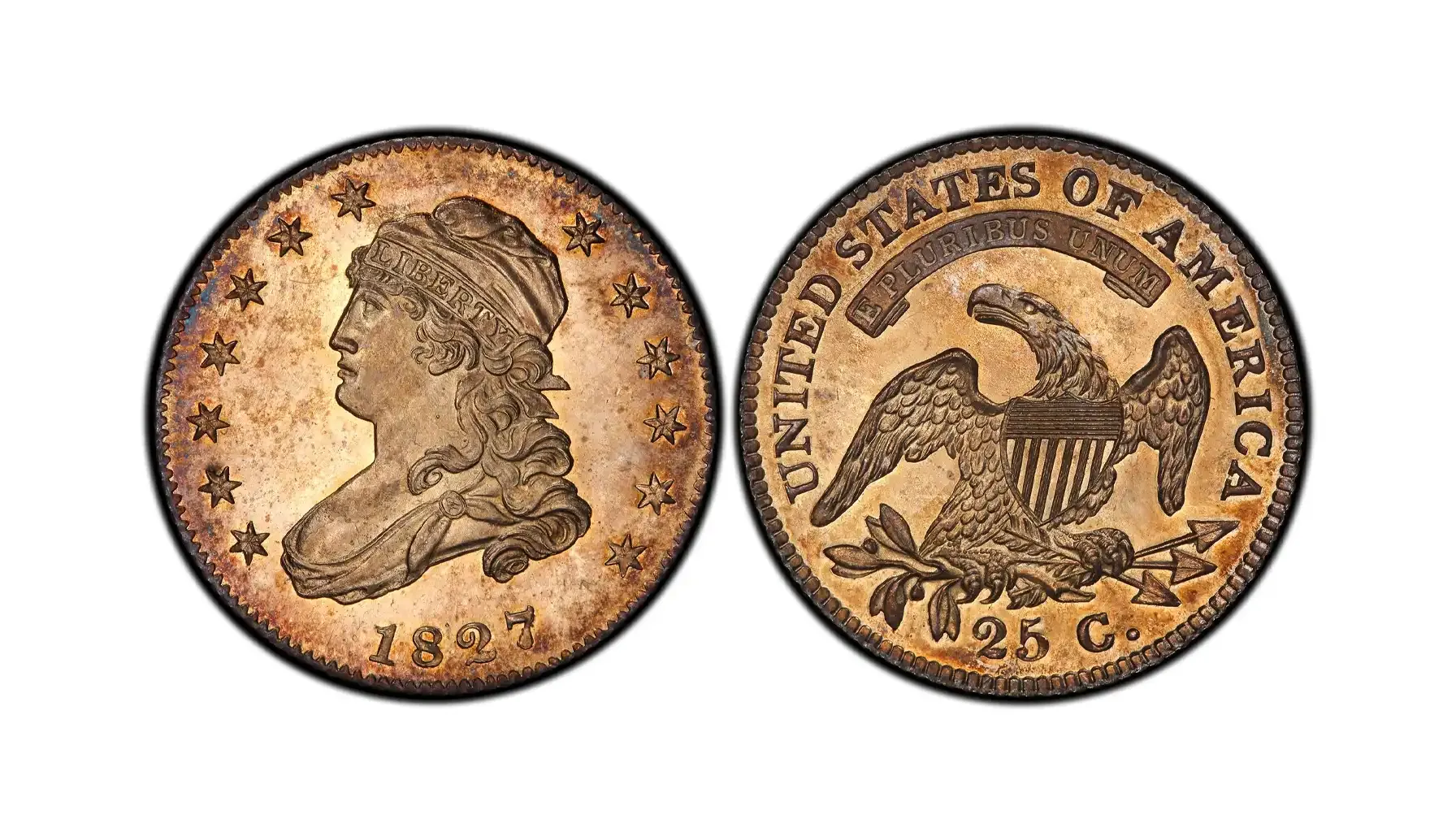
Produced by: Philadelphia Mint
Mintage: 12 (estimated)
Auction Record: $705,000 for PR66+
Official records provided by PCGS list 4,000 pieces of this kind, but only 12 have been confirmed, each with its own pedigree and relevant documentation. All known examples are proofs, meaning they have been created for collectors or presentation purposes. However, it could not escape the fate of all other coins, i.e., errors. Their uniqueness consists in the fact that each is overdated with a visible “3” under the “7,” confirming the reuse of dated dies.
1839 25C No Drapery (Regular Strike)
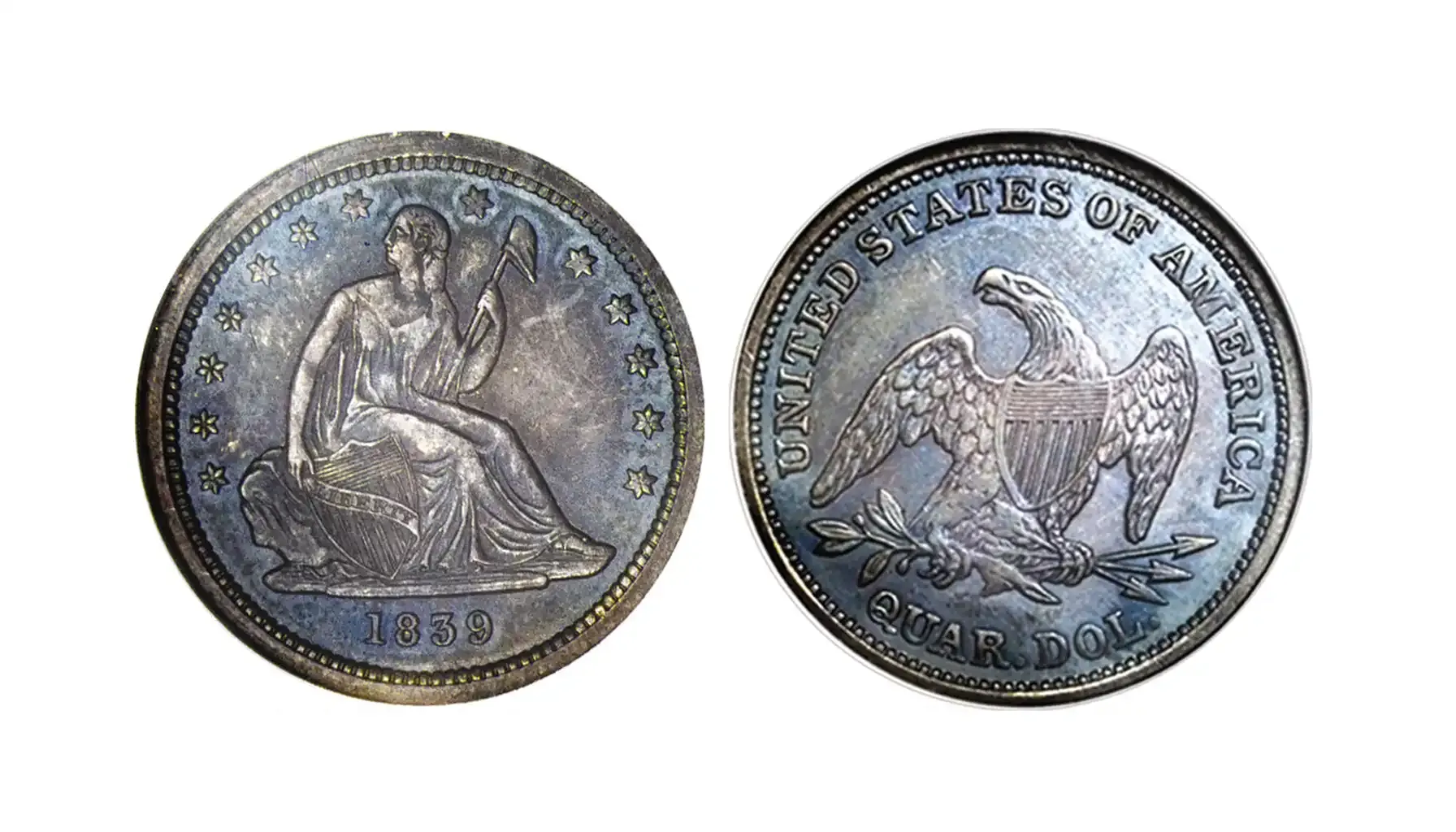
Produced by: Philadelphia Mint
Mintage: 491,146
Auction Record: $517,500 for PR65
The "No Drapery" variant from 1839 is one more numismatic creation known for its design transition and the extreme rarity of proof versions. The Kaufman specimen, which remained in private hands for decades, is the only certified proof that represents one of the rarest Seated Liberty quarters ever offered at public auction.
1901-S 25C (Regular Strike)
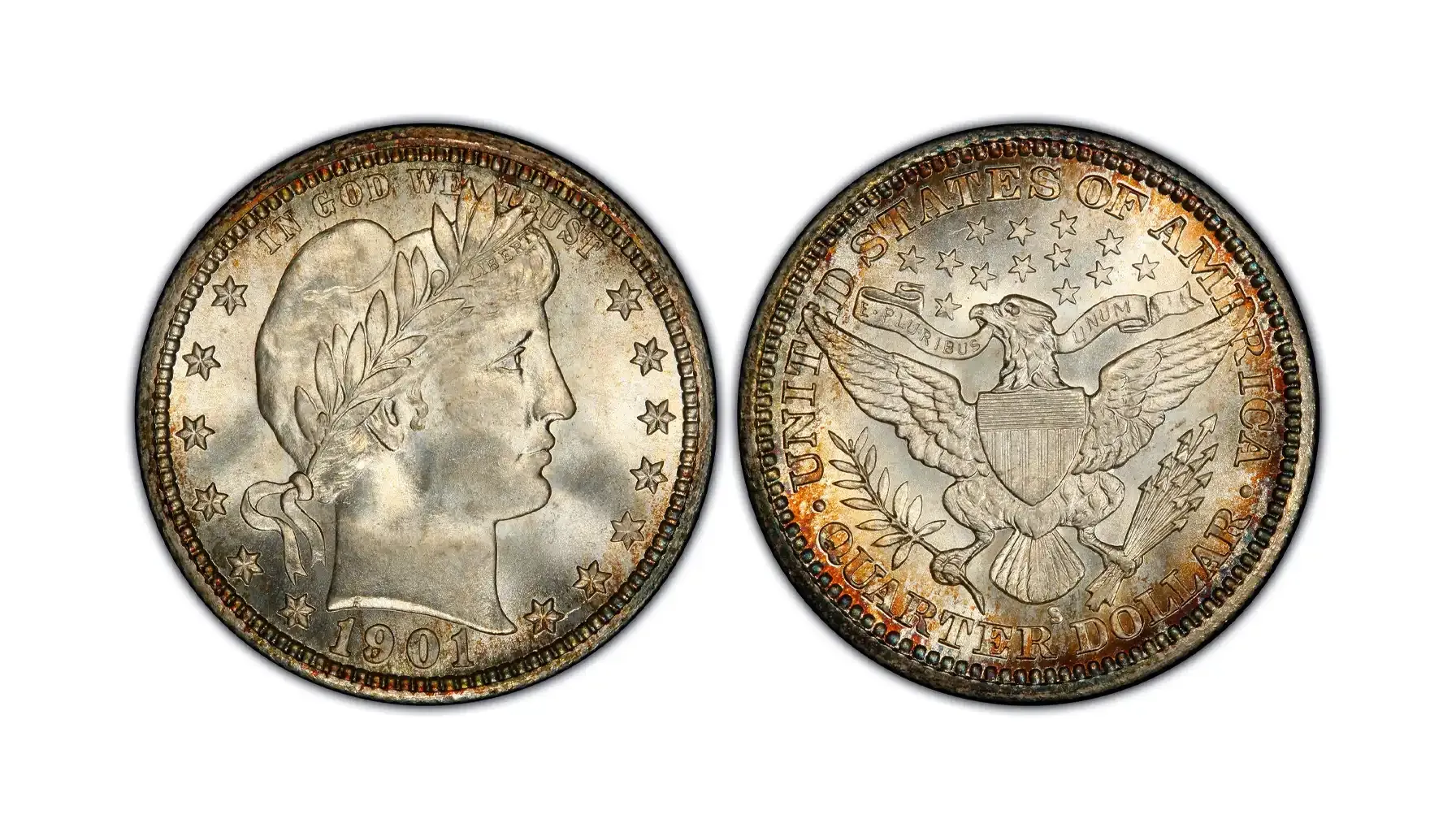
Produced by: San Francisco Mint
Mintage: 72,664
Auction Record: $550,000 for MS68
The 1901-S Barber quarter has earned its reputation as the key date of the series due to the fact that it might possibly be the rarest 20th-century Ag coin found in Mint state. Most surviving examples are heavily circulated, often grading only AG or G. Mint State examples are nearly impossible to find, yet when they do appear, they command overwhelming prices just because of their status and heritage.
1920-D 25C FH (Regular Strike)

Produced by: Denver Mint
Mintage: 3,586,400
Auction Record: $372,000 for MS68+FH
Designations matter, and this can be proven by the example of the 1920-D Standing Liberty 25 cents. Although it had a relatively high mintage, Full Head (FH) condition does all the work on its part. Striking quality from the Denver Mint that year was inconsistent, which is why instances with a full head and minimal contact marks in Mint State are elusive.
1932-D 25C (Regular Strike)
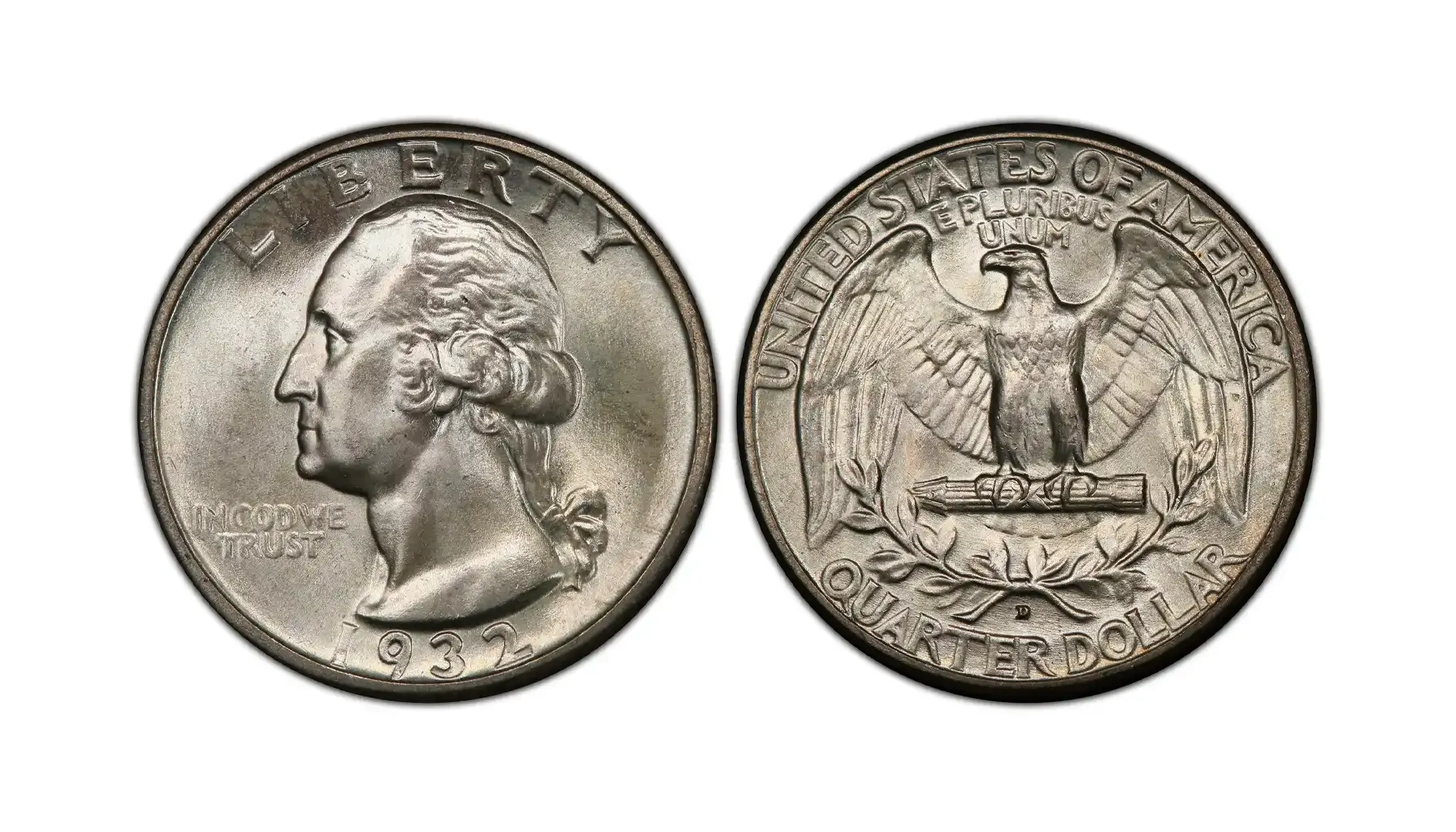
Produced by: Denver Mint
Mintage: 436,800
Auction Record: $143,750 for MS66
Despite being the first year of issue, the 1932 D Washington 25-cent coin is the rarest key date. Most of the instances entered circulation immediately during the Great Depression, providing the Uncirculated examples with a status of incredibly difficult pieces to source today. In addition to this, the coin was technically available through the Treasury into the mid-1930s, when it should have been stopped from being distributed on the official level (general circulation is not the case, though).
How to Tell If a Quarter Is Silver?
Spotting a silver quarter is easier than you might think. To make you less concerned about being wrong or fooled, we recommend that you appeal to numismatic tools like Coin ID Scanner to follow the steps below more confidently:
Check the Date: Any US quarter dated 1964 or earlier is made of 90% silver.
Look at the Edge: Silver 25C coins have a solid silver edge, unlike modern quarters, which show a copper-colored stripe in the middle.
Weigh: Silver quarters typically weigh 6.25 g or 6.74 g (before 1838), while modern clad quarters are slightly lighter at 5.67 g.
Pay Attention to the Color and Luster: Silver coins have a soft, white sheen that differs from the more reflective and grayish appearance of modern alloy coins.
Do not limit yourself to older numismatic creations, for many recent issues also offer compelling silver options for collectors to enrich their experience with more affordable yet appealing coins to admire.


